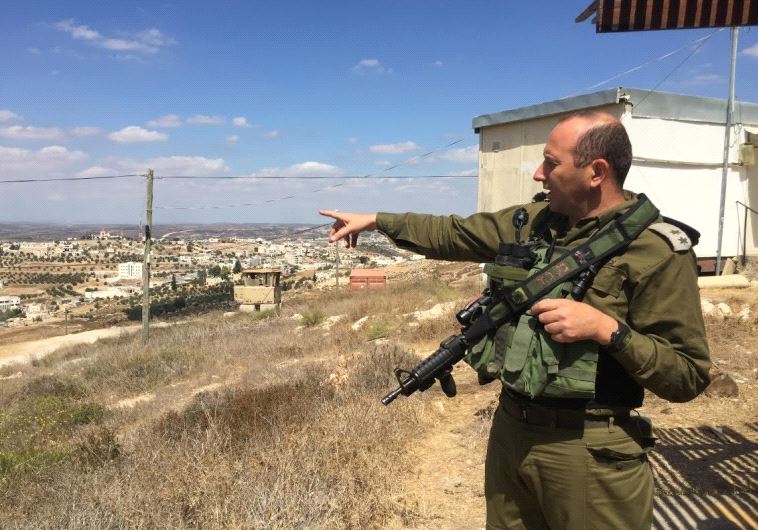The IDF’s active defense brings security to Hebron region
The 401st has been protecting a large area of the West Bank around Hebron for the last four months.
 Lt Col Tsafrir Harshoshanim points at Palestinian villages west of Hebron(photo credit: SETH J. FRANTZMAN)Updated:
Lt Col Tsafrir Harshoshanim points at Palestinian villages west of Hebron(photo credit: SETH J. FRANTZMAN)Updated: